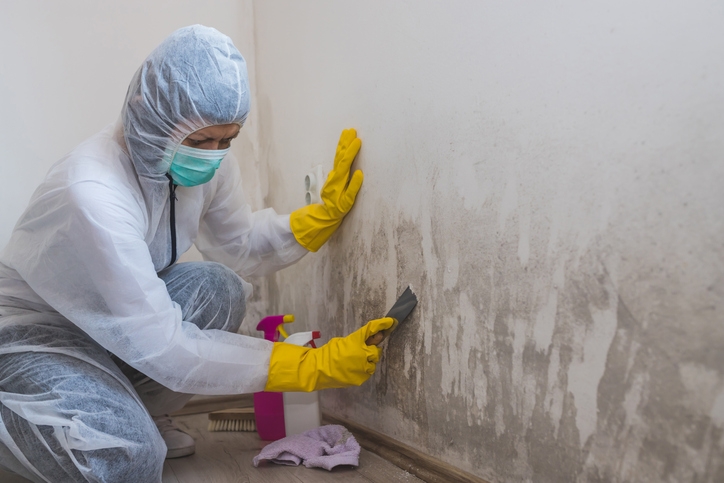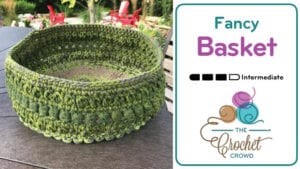Mold and mildew are types of fungi that grow on damp surfaces. While similar, mildew and mold have characteristics that set them apart, which dictates the most effective cleaning methods.
Mold and mildew are most common in bathrooms, basements, and areas with water damage or excessive humidity levels. Both can cause health problems, allergic reactions, and structural damage to your home.

If you are able to identify mold vs mildew, you can clean up the spores and stop these fungi from spreading.
What Is Mold?
Mold is a type of fungi that grows in multicellular structures known as hyphae. It can take on many shapes, textures, and colors. The most toxic indoor mold is black mold, also known as Stachybotrys chartarum. It’s common on often damp surfaces such as shower ceilings.
Mold spores are always present, they just aren’t harmful during the early stages of their growth. They begin to grow when their ideal, dark and moist environment is present.
What Is Mildew?
Mildew is technically a type of mold. Still, it differs from how we normally think of mold varieties. Rather than a texturized surface, mildew is flat and doesn’t grow in as many colors as mold.
Like mold, mildew grows in moist environments. You might find it on bathroom or basement walls or growing in damp clothes that have set in a hamper for too long. Mildew poses fewer health and structural risks and is easier to clean.
Mold vs. Mildew: Here’s the Difference
Mildew Is Dry
Mildew is a dry and powdery substance that grows on surfaces. It has a texture similar to peach fuzz or mushroom spores.
Mildew Has A Light Color
To the naked eye, mildew spores are grey, white, or light green. Though the materials underneath mildew can be dark, if you look closely, you’ll notice that the powdery part of mildew is a light color, usually white.
Mildew Grows On Surfaces
Mildew doesn’t penetrate deep into surfaces; instead, it sits on top.
Mold Is Slimy
While mildew is soft and powdery, mold is slick and slimy. It often has a raised texture (sometimes fuzzy.) If you find a substance that looks like mildew but is slick, it’s probably mold.
Mold Comes In Many Colors
While mildew comes in a set amount of colors, mold comes in a rainbow of colors, including black, green, brown, pink, orange, yellow, and red.
Mold Grows Deep
Mold grows deep into surfaces, which is what enables it to cause structural damage. So if your “mildew” doesn’t” wash off easily, it’s probably mold.
Signs Of Mold and Mildew
The earlier you spot mold and mildew, the less cleaning you’ll need to do. Here are the non-visual signs of mold.
Musty Smell
Both mold and mildew smell damp, musty, and a little rotten. The smell is from the microbial volatile organic compounds that the mold produces.
If the smell is coming from your HVAC system, then there’s a good chance that there is mold growing inside of it. Test regularly to ensure that there aren’t any harmful bacteria building up.
Health Issues
If you’re experiencing breathing issues or a runny nose, mold could be the culprit. Other health effects include itchy eyes, runny nose, and respiratory problems. Check out a full list of symptoms before you self-diagnose and see a doctor if you have breathing problems.
Peeling Walls
Bubbling, peeling, and cracking indicate moisture. Where there is moisture, there is often mold.
Recent Flooding
If you have a leaky pipe or experienced overflowing sinks or toilets that you didn’t promptly clean up, mold may be present. Look for visual signs.
How To Prevent Mold Vs Mildew
While getting rid of mold can be difficult, preventing mold isn’t. Take these precautions to prevent mold from growing in your home.
- Clean up standing water – including splashed bathwater, leaks, and spills.
- Let moisture-prone areas dry out – your laundry basket, for example, needs to air out between uses to prevent mold growth.
- Fix leaks promptly – moisture leads to mold and mildew, and leaks can cause severe damage.
- Run a dehumidifier – high humidity rooms (like basements) will benefit from a dehumidifier.
- Ensure bathroom exhaust fans work – bathroom ceilings are a prime spot for mold, especially in rooms with non-working exhaust fans.
DIY Mold and Mildew Removal
In most cases, you can remove mold yourself. The EPA recommends calling in mold remediation specialists when mold covers more than a 10-square-foot patch.
To eliminate mold, you must first kill it and then scrub it off.
Hydrogen Peroxide
You can kill mold and mildew with 3% hydrogen peroxide.
- Put undiluted hydrogen peroxide on the mold (using a spray bottle is easiest)
- Saturate and allow the peroxide to sit for 10-15 minutes
- Scrub with a sponge or soft-bristled brush
- Rinse and dry the wall
If mold or mildew persists, repeat the process.
Bleach And Water Solution
Fill a spray bottle with one part chlorine bleach to three parts water. Spray the mold or mildew, let it sit for 15 minutes, and then scrub the area. Rinse and dry the surface afterward.
White Distilled Vinegar
Spray undiluted white distilled vinegar on the mold, allow it to sit for fifteen minutes, scrub the mold off, rinse, and dry the area.
Frequently Asked Questions (FAQ)FAQ
How Do I Identify Black Mold Vs Mildew?
Black mold is one of the most harmful types of mold. Mildew is much less harmful than most molds. The biggest difference you may notice between them is that mold will be fuzzier and darker.
Is There A Difference In Mold Vs Mildew Remover?
There is a difference between mold vs mildew remover. Mold remover must be stronger while mildew can sometimes be removed with a simple cleaner or vinegar. Mold needs a special cleaner and sometimes requires a professional.
What Kills Mold And Mildew Both?
One of the only over-the-counter substances that clean both mold and mildew is bleach. Bleach can kill almost anything you find in your home. So use it with caution and always test in small amounts first.
Does Mold Vs Mildew Exposure Create Different Symptoms?
Yes. Mildew symptoms are almost always mild. They are similar to mild cold symptoms. But it doesn’t usually cause any symptoms at all. Mold symptoms can be similar but are always more severe and include lung issues as well.
( function( $ ) {
$( ‘.faq-section .faq-q’ ).on( ‘click’, function( event ) {
event.preventDefault();
$( this ).closest( ‘.faq-item’ ).toggleClass( ‘toggled’ );
});
})( jQuery );
The post Mold Vs. Mildew: Do You Know The Difference? appeared first on Homedit.







